The last of the Lunar Orbiters
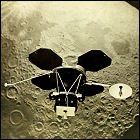 NASA’s final Lunar Orbiter satellite is sent to the moon, with a goal of completing the mapping of the moon’s surface left unfinished by mechanical issues with its predecessor. Lunar Orbiter 5 completes the mapping of the lunar far side and helps engineers and scientists determine signal coverage from the Earth-based tracking stations that will help NASA stay in contact with future Apollo missions to the moon.
NASA’s final Lunar Orbiter satellite is sent to the moon, with a goal of completing the mapping of the moon’s surface left unfinished by mechanical issues with its predecessor. Lunar Orbiter 5 completes the mapping of the lunar far side and helps engineers and scientists determine signal coverage from the Earth-based tracking stations that will help NASA stay in contact with future Apollo missions to the moon.
Lunar Orbiter 4 launched
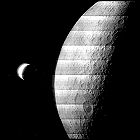 NASA’s fourth Lunar Orbiter satellite lifts off for its one-week trek to the moon. Placed into an orbit that takes it over the moon’s poles instead of its equator, Lunar Orbiter 4 is able to map virtually all of the near side of the moon over a period of two weeks. Plans to have Lunar Orbiter 4 map the far side are thwarted by mechanical failures and problems with the probe’s camera optics.
NASA’s fourth Lunar Orbiter satellite lifts off for its one-week trek to the moon. Placed into an orbit that takes it over the moon’s poles instead of its equator, Lunar Orbiter 4 is able to map virtually all of the near side of the moon over a period of two weeks. Plans to have Lunar Orbiter 4 map the far side are thwarted by mechanical failures and problems with the probe’s camera optics.
Lunar Orbiter 3 launched
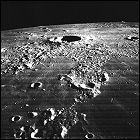 The third of five Lunar Orbiter satellites is launched to the moon by NASA, and once in orbit, Lunar Orbiter 3 achieves an unmanned spaceflight first: it’s the first unmanned space probe to image another unmanned space probe (in this case, Surveyor 1, which has been on the moon since 1966). A mechanical fault prevents Lunar Orbiter 3 from returning roughly a quarter of its images to Earth.
The third of five Lunar Orbiter satellites is launched to the moon by NASA, and once in orbit, Lunar Orbiter 3 achieves an unmanned spaceflight first: it’s the first unmanned space probe to image another unmanned space probe (in this case, Surveyor 1, which has been on the moon since 1966). A mechanical fault prevents Lunar Orbiter 3 from returning roughly a quarter of its images to Earth.
Lunar Orbiter 2 launched
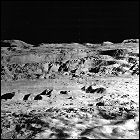 The second in NASA’s series of Lunar Orbiter satellites lifts off from Earth on a course for the moon. Lunar Orbiter 2 spends a full week examining the surface of the moon from orbit, sending back high-resolution TV images for mapping purposes, and to help NASA scientists and engineers select suitable landing sites for the upcoming Apollo program. Lunar Orbiter 2’s orbital path allows it to image a particularly promising plain in the Sea of Tranquility…
The second in NASA’s series of Lunar Orbiter satellites lifts off from Earth on a course for the moon. Lunar Orbiter 2 spends a full week examining the surface of the moon from orbit, sending back high-resolution TV images for mapping purposes, and to help NASA scientists and engineers select suitable landing sites for the upcoming Apollo program. Lunar Orbiter 2’s orbital path allows it to image a particularly promising plain in the Sea of Tranquility…
Lunar Orbiter 1 launched
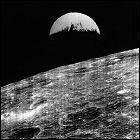 The first of five Lunar Orbiter satellites is launched by NASA, on a mission to map the moon and scout out promising landing sites for the Apollo program. In addition, radiation and micrometeor collision detectors fly aboard each Lunar Orbiter to see if the design specs of the Apollo spacecraft will be adequate to protect astronauts. Lunar Orbiter 1 is the first spacecraft to send home an image of the Earth as seen from the moon. To keep it from being a navigational hazard to future spacecraft, each Lunar Orbiter deorbits and crashes into the moon after completing its survey.
The first of five Lunar Orbiter satellites is launched by NASA, on a mission to map the moon and scout out promising landing sites for the Apollo program. In addition, radiation and micrometeor collision detectors fly aboard each Lunar Orbiter to see if the design specs of the Apollo spacecraft will be adequate to protect astronauts. Lunar Orbiter 1 is the first spacecraft to send home an image of the Earth as seen from the moon. To keep it from being a navigational hazard to future spacecraft, each Lunar Orbiter deorbits and crashes into the moon after completing its survey.